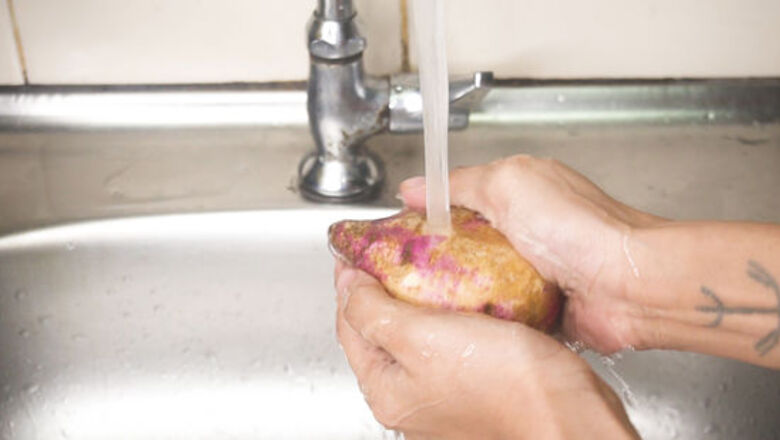
views
Peeling Uncooked Sweet Potatoes
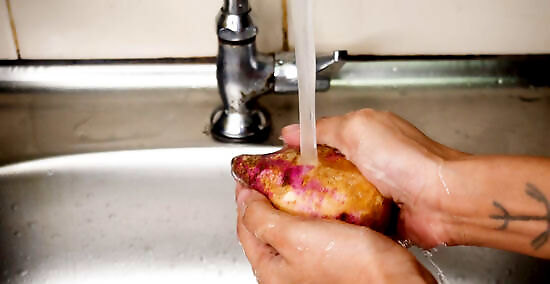
Wash the sweet potato under running water. Scrub the sweet potato with a scrubbing brush. Make sure that you remove any dirt on the skin. Sweet potatoes grow underground, which is why it is important to clean them first. It can help to use slightly warm water when washing the sweet potato. This is because the warmth helps to soften the skin, which makes peeling easier.
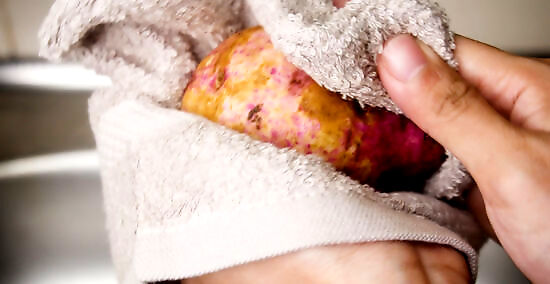
Dry the sweet potato. Once you have washed the sweet potato, use a tea towel to remove the excess water. Alternatively, you can use paper towels instead. It’s important to dry the sweet potato before you begin peeling. This is because if the skin is wet, the sweet potato could slip out of your hand which is dangerous while you are using a peeler or a paring knife.
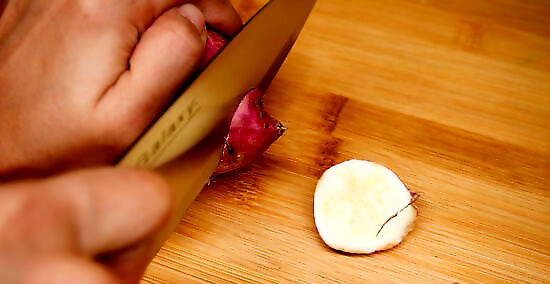
Cut off the woody parts of the sweet potato. Look at the skin of the sweet potato and identify any parts that are thick, tough, or are otherwise too difficult to peel. Use a sharp knife to cleanly slice off these parts. Removing the woody parts will make the sweet potatoes far easier and safer to peel.
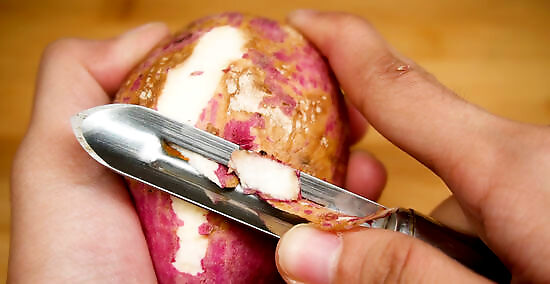
Peel the sweet potato from the root to the tip with a vegetable peeler. Use a vegetable peeler with a serrated edge if possible. Make long, even strokes over the sweet potato skin. Turn the sweet potato in your hand as you work your way around. You can use either a regular vegetable peeler or a serrated vegetable peeler for peeling sweet potatoes. However, a vegetable peeler with a serrated edge may be easier to use as it is better at gripping the sweet potato skin.

Use a paring knife to peel the sweet potato if you don’t have a vegetable peeler. Hold the sweet potato in your non-dominant hand and the paring knife in your dominant hand. Make a small incision into the sweet potato skin and draw the knife gently under the skin to start removing a peel. Guide the knife down the sweet potato from the root to the tip. Peeling with a paring knife tends to be less wasteful than using a vegetable peeler.
Peeling Boiled Sweet Potatoes

Fill a large bowl with ice water. Use a bowl that is large enough to fit all of the cooked, sweet potatoes inside. Fill the bowl with cold water and ice cubes. It’s best to use this method for boiled sweet potatoes that you are planning to mash. You can also peel regular, boiled potatoes using this same method. You may have to peel the sweet potatoes in small batches if they won’t all fit in the bowl at the same time.
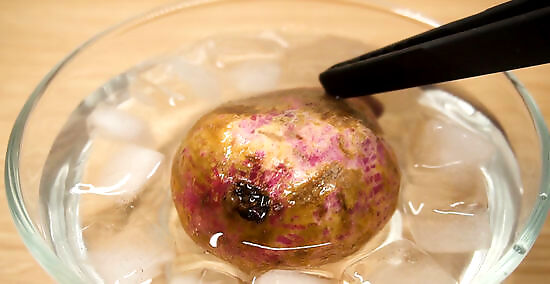
Transfer the boiled sweet potatoes into the ice water. Use tongs to move each sweet potato from the hot water into the bowl of ice water. Make sure that each sweet potato is fully submerged. Be very careful not to crush the sweet potatoes as they are transferred because they will be softer after boiling.
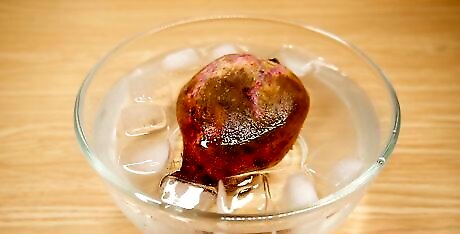
Leave the sweet potatoes in the bowl for 30 seconds. After 30 seconds, remove each sweet potato individually with tongs. Place the sweet potatoes onto a plate. You can swish the sweet potatoes around gently in the ice water if you prefer. While you are handling the sweet potatoes, be very gentle as they will be quite soft after being cooked.
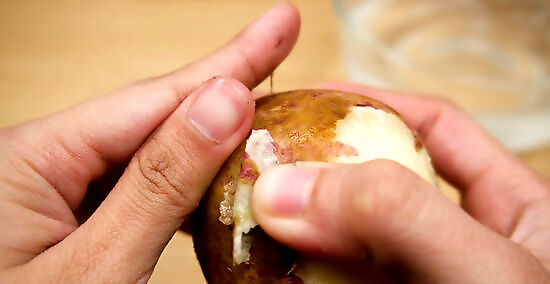
Peel the skin off each sweet potato with your hands. Gently tug on the tough root part on the end of each sweet potato to remove it. Then simply pull on the skin slightly with your fingers and it will come away. The skin will be loose and quite wrinkly. When the sweet potatoes are cooked, the flesh contracts, which makes the skin loose and easy to remove. You may need to gently rub the skin with your thumb to help it to shed away from the sweet potato.


















Comments
0 comment